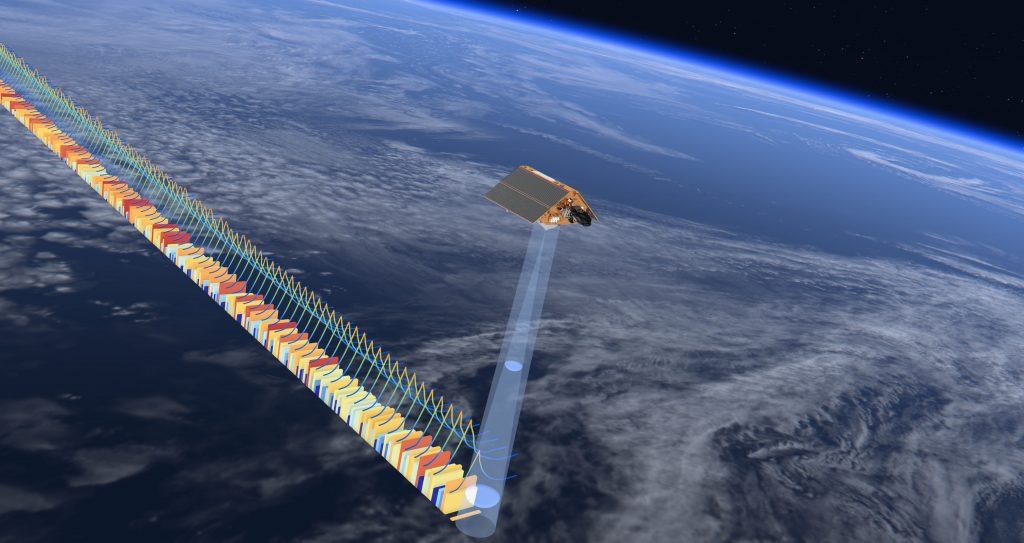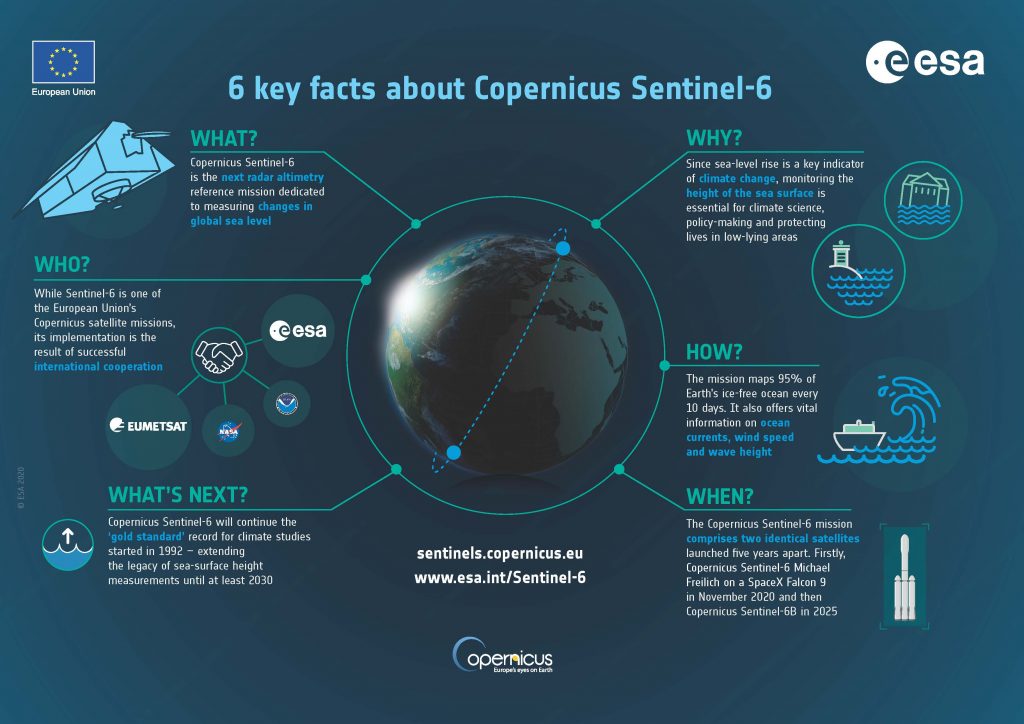
The Copernicus Sentinel-6 Poseidon-4 dual-frequency (C- and Ku-band) radar altimeter uses an innovative interleaved mode that has improved performance compared to previous satellite altimeter designs.
With Copernicus Sentinel-6 Michael Freilich just days away from liftoff, the all-important Flight Readiness Review has concluded. This means that teams can proceed for the scheduled launch from the Vandenberg Air Force Base in California, US, at 17:17 GMT (18:17 CET, 09:17 PST) on Saturday 21 November.
The team recently powered up the satellite to give it a health check and ‘exercise’ its reaction wheels to make sure they run freely after launch. In addition, the Falcon 9 rocket has been rolled out to the launch pad in preparation for testing.
Copernicus Sentinel-6 Michael Freilich uses the latest radar altimetry technology to advance the long-term record of sea-surface height measurements that began in 1992 – measurements that are essential for climate science, for policy-making and, ultimately, for protecting the lives of millions at risk of sea-level rise.
The satellite has been at the Vandenberg Air Force Base being prepared for launch since the end of September.
From the ESA Sentinel-6 launch campaign team in Vandenberg.
Read more about the Copernicus Sentinel-6 mission.

Discussion: no comments